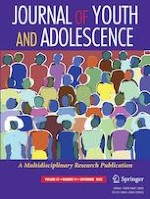13-07-2022 | Empirical Research
The Distinct Roles of Biological and Perceived Pubertal Timing in Delinquency and Depressive Symptoms from Adolescence to Adulthood
Gepubliceerd in: Journal of Youth and Adolescence | Uitgave 11/2022
Log in om toegang te krijgenAbstract
Pubertal timing is a robust predictor of externalizing and internalizing problems in adolescence, but controversies remain whether only early or off-time (both early and late) pubertal timing is associated with negative developmental outcomes and whether effects differ across perceptions of pubertal timing and actual biological pubertal timing. Additionally, less is known about the longevity of pubertal timing effects and mediators of effects that persist through adolescence and into adulthood. This longitudinal study investigated the effects of early and off-time pubertal timing, in form of perceived pubertal timing relative to peers and reported biological pubertal timing relative to age, on delinquency and depressive symptoms in adolescence and young adulthood between 2003 and 2022. Peer deviance and school connectedness were examined as mediators of any persisting effects. The sample included 704 youth (52% male, 76% African American, 22% Non-Hispanic White) who were assessed at four time points from early adolescence (Mean ages: 11.8, 13.2) to late adolescence (Mean age: 17.6) and young adulthood (Mean age: 27.7). Perceived off-time pubertal timing in males and early biological pubertal timing in both males and females were risk factors for persistent delinquency into young adulthood, but neither form of pubertal timing was associated with depressive symptoms. None of the effects were mediated by peer deviance or school connectedness. These findings advance the understanding of more nuanced effects of pubertal timing on adjustment problems in diverse youth as they develop from early adolescence to adulthood.
